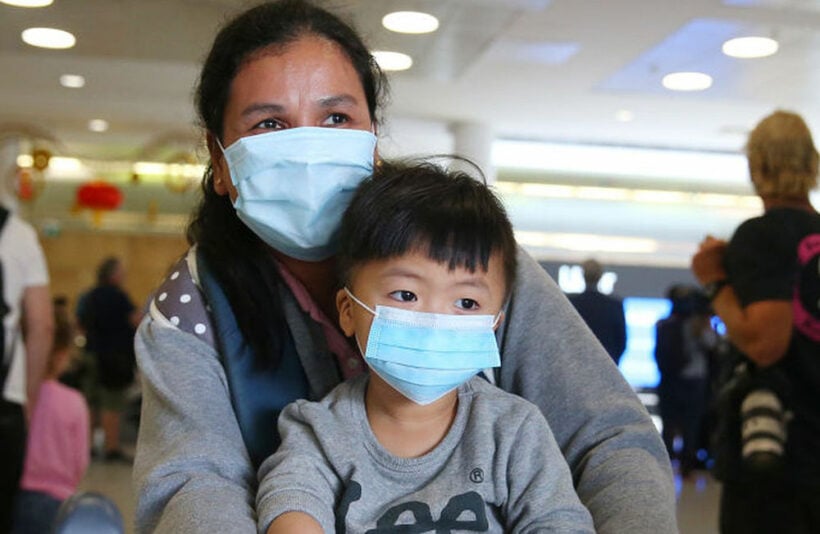Coronavirus UPDATE – 28,276 confirmed cases, many people continue to recover

The month-long outbreak of the novel coronavirus shows no sign of letting up with the death toll rising, along with the list of new cases and an increasingly long list of full recoveries. Chinese health officials have raised the death toll to 565, with a total of 28,276 cases identified around the world. The number of full recoveries now exceeds 1,000.
Hong Kong authorities say they will now quarantine all arrivals from mainland China whilst the Chinese government faces intense public criticism over its response to the outbreak.
3,700 cruise ship passengers are now facing up to two weeks of ‘cabin fever’ – two-week enforced quarantine – after 10 coronavirus cases were identified on the luxury Japanese ship moored in Yokohama Bay. Amongst the passengers are 400 Americans. Another cruise ship was being screened in Hong Kong because a few people on an earlier trip carried the virus.
Here’s a list of airlines that have currently cancelled flights in and out of China…
Asia and Oceania
Air Asia – Some flights suspended until February 29
All Nippon – Some flights suspended until March 29
Cathay Pacific and Cathay Dragon – 90% reduction in flights
Japan Airlines – Some flights suspended until March 28
Korean Air – Some flights suspended until the end of March
Singapore Airlines and SilkAir – Some flights suspended until March 1
QANTAS – Suspended until March 29
Air New Zealand – Suspended until March 29
Europe and the Middle East
Air France – Suspended until February 9
British Airways – Suspended until February 29
Lufthansa, Swiss and Austrian Airlines – Beijing and Shanghai flights suspended until February 29; other routes until March 28
Turkish Airlines – Suspended until the end of February
Etihad – Suspended from February 5
Emirates – Suspended from February 5
Qatar Airways – Suspended until further notice
Finnair – Beijing and Shanghai flights suspended until February 29; other routes to March 29
KLM – Beijing and Shanghai flights suspended until February 9; other routes to February 29
Iberia – Suspended until February 29
North America
American Airlines – Suspended until March 27
United Airlines – Suspended until March 28
Delta – Suspended until April 30
Air Canada – Suspended until February 29
(Information from CNN)
 A few questions…
A few questions…
Is there any cure?
No, beyond treating symptoms and waiting for the human immune system to kick in and fight the virus. But progress is being made. Thai doctors claim they have successfully treated two patients with a cocktail of antiviral drugs. A similar treatment has been trialled in China but the results have not been accredited by the World Health Organisation.
Who is the most likely to be infected?
People of any age can be infected with the coronavirus virus, anywhere in the world. But, like other flu, older people, people with pre-existing medical conditions, people with compromised immune systems, are especially vulnerable to severe complications. Children, at this stage, appear to have been largely spared many cases of the virus. Most people will recover from the virus with the rate of death rate floating around 2%, indicating the coronavirus is less deadly than the earlier SARS and MERS coronaviruses.
What are the symptoms?
Coronavirus symptoms will likely appear like a flu, the fever, coughing and trouble breathing. If you show these symptoms and recently went to China, or have been in contact with someone who visited, you should visit a hospital urgently.
How is the virus spread?
The virus is understood to spread person-to-person through droplets floating around the air after an infected patient coughing or sneezing nearby. Scientists say there’s also a possibility the cornavirus can exist in, and spread through, contaminated fecal matter. There’s currently no evidence that the virus is “airborne”, so it doesn’t simply float through the air or across a room.
What can I do to protect myself?
Do what you do during any flu season. Wash your hands often with soap and water, cover your nose and mouth if you sneeze or cough, avoid close contact with people or large gatherings, and wear a face mask if you are travelling around large crowds or in areas with concentrations of Chinese travellers. Statistically, if you take basic precautions, you are extremely unlikely to contract the Novel Coronavirus. And if you do, for now, you have a 98% chance of full recovery.
Is it safe to travel, and travel around Asia?
Many airlines have suspended flights in and out of China. And thousands of foreign citizens, who were living in Wuhan, have now been repatriated to their home countries. But there are many countries, including the US, advising against travel to China. It would be sensible to postpone holidays or leisure travel to China until the statistics starts to trend downwards. Just keep abreast of reliable reporting. Travelling around other Asian destinations, statistically, is still extremely safe with the current checks and awareness around the region.
Is there a need to panic?
No
We’re now at a new junction in the current outbreak of the novel coronavirus. At this stage, after a month of worrying news, rising death tolls and new cases, the World Health Organisation is still measured in its communications about the virus. The word “pandemic”- an ongoing epidemic of the virus on two or more continents – is being whispered but not used officially. There is a predictable panic, spreading of misinformation, dramatic media headlines and wall-to-wall coverage from all angle.
Social media is also playing a strong role in this current outbreak with desktop experts spreading their own fears, misguided analysis, and sharing clearly fake videos and dramatic out-of-context stories.
But, even with the mounting death toll and news cases, statistically, it is a tiny proportion of the, mainly Chinese, population affected although the measures to control the spread of the coronavirus are having far-reaching effects on people living in China, especially in the epicentre province of Hubei, where up to 50 million people are in “lockdown”. But the loss of 565+ lives remains tragic.
Outside of China, there are 185 confirmed cases in 25 countries, including one death in The Philippines. There’s still a lot we don’t understand about the 2019-nCoV (coronavirus), including exactly how it’s transmitted, where it’s spreading, and how deadly it will be, once all the current cases have made the journey through diagnosis, symptoms and, hopefully, recovery. The death rate from this strain of the coronavirus has been steady at around 2%, much lower than with the 2002/2003 outbreak of SARS, another coronavirus strain.
Given all that remains unknown about 2019nCoV, there is still plenty of room for a surge in new patients or a slow drop – both are possible and we are sure to see some new twists and turns in the ongoing coronavirus story. But many health experts do expect this outbreak to get worse, with new infections appearing, not only in China. A further increase in patients will continue to burden the Chinese health system, and spread into poorer countries with weaker health systems.
A surge will also continue to impact the Chinese economy, with a ‘viral’ knock-on to the world economy. Tourism around Asia, which has hugely benefitted from the expansion of outbound Chinese tourists, will also be severely curtailed.
But even health experts cannot agree on the future of coronavirus cases, and whether it will continue to spread or if we may soon see a plateau of new cases and a slow drop. Certainly, the appearance and spread of the Wuhan Coronavirus or Novel Coronavirus is a huge wake up call for health authorities around the world. Over the 17 years since the SARS outbreak there’s been few outbreaks leading many to think that these outbreaks are under control. There is no doubt there will be a lot more pro-active and preventative measures to ensure that future outbreaks, and possible pandemics, are minimised.
And some soul-searching in China.
Latest Thailand News
Follow The Thaiger on Google News:


























